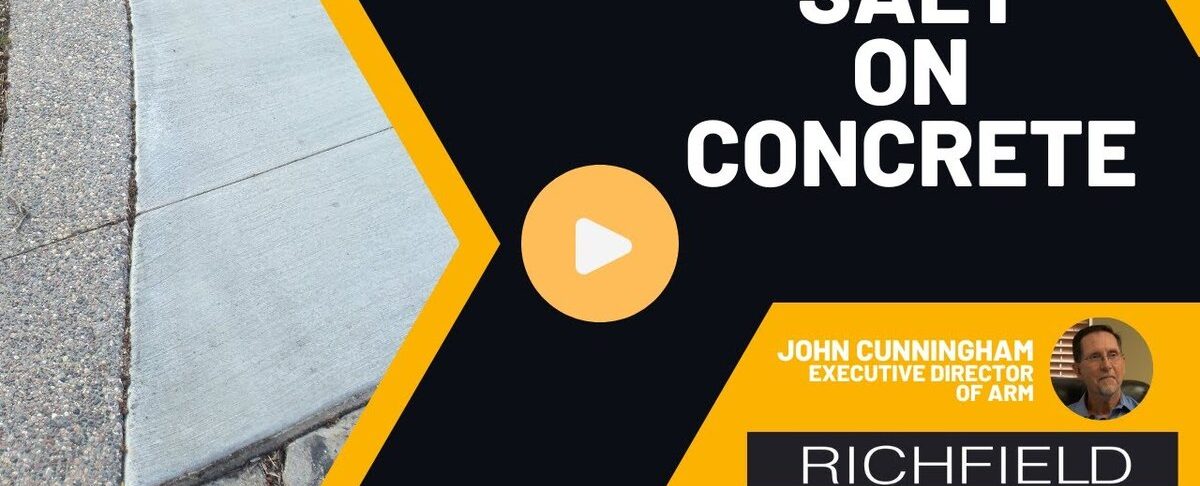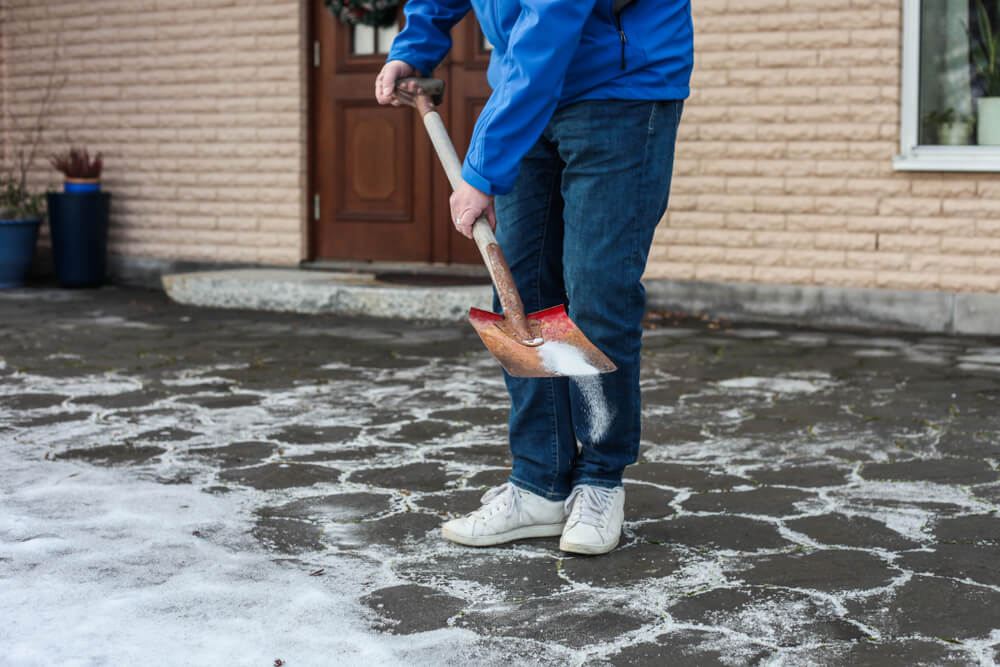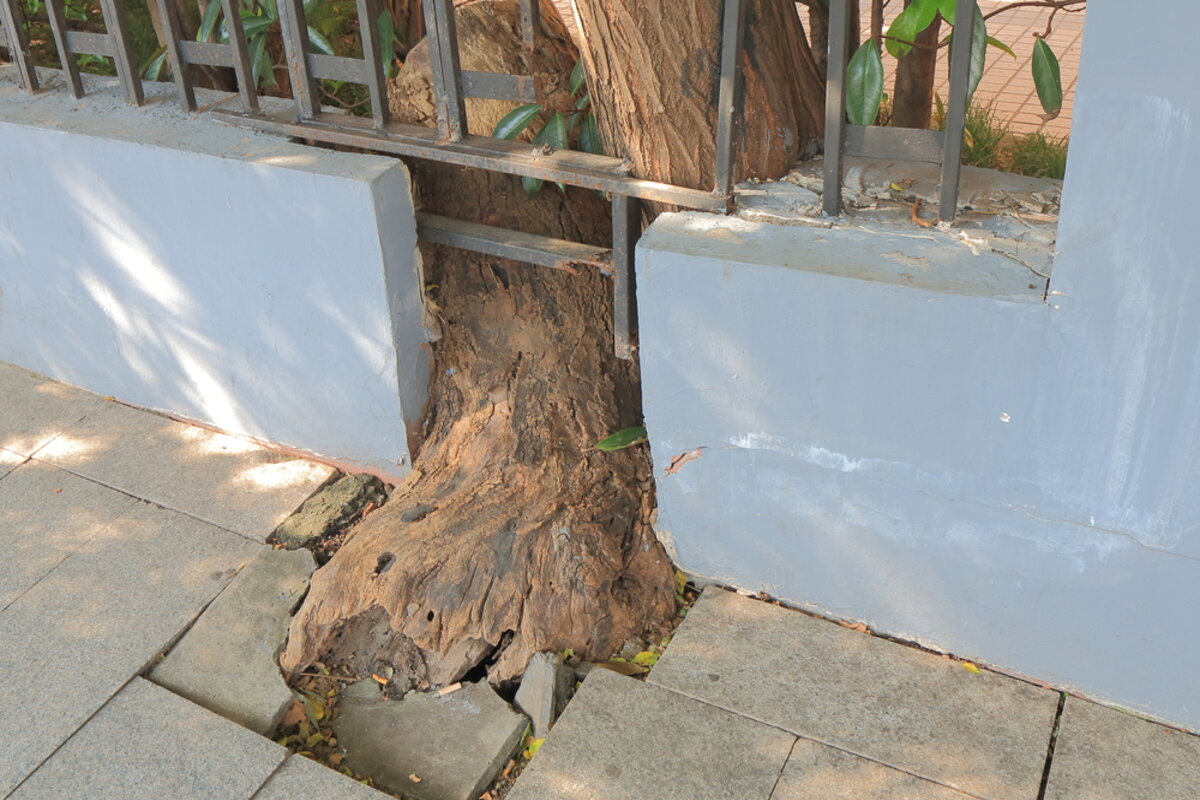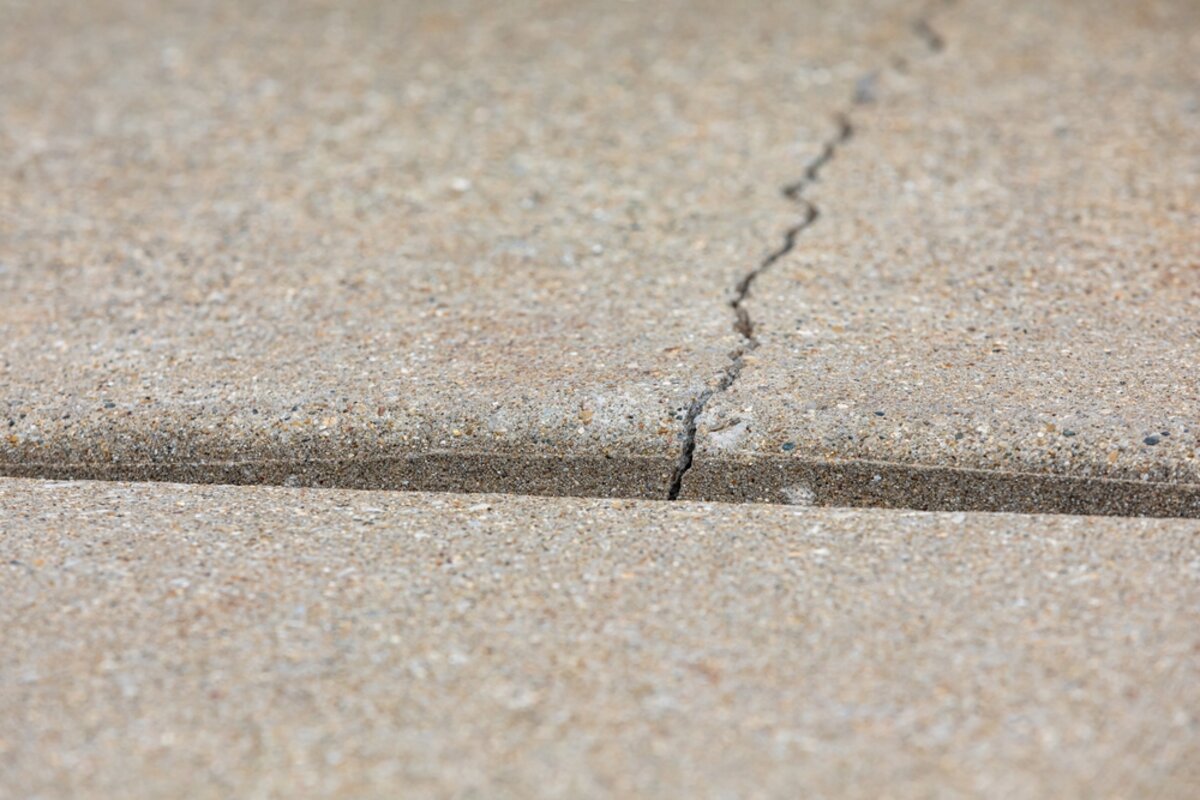Newly-poured concrete needs time to strengthen and gain durability, especially as it faces its first winter. During this crucial period, the concrete undergoes various chemical changes that allow it to harden and become more resistant to wear and tear. The first winter serves as a litmus test for how well the concrete will stand up to environmental stresses in the years to come.
Consequences of Using Salt on New Concrete
One common question that homeowners ask is: “Can I put salt on my new concrete?” While salt (sodium chloride) is frequently used as a deicing chemical, applying it on new concrete during its first winter can have detrimental effects.
Stress and Surface Damage
When salt or any deicing chemical comes in contact with new concrete, it can induce stress on the surface. If the concrete hasn’t had adequate time to gain strength, this chemical interaction can lead to flaking or scaling. These conditions mar the appearance of the concrete surface and can lead to long-term structural damage.
Best to Avoid in the First Year
To minimize such risks, it is generally recommended to avoid the use of deicing chemicals on new concrete for the first winter. Sometimes, however, the need for a slip-free surface may make it difficult to completely avoid the use of deicers. If you find yourself in such a situation, it’s crucial to be selective about the chemicals you choose.
Alternatives to Salt
In cases where you need a safer alternative for traction during icy conditions, consider using grit-like substances on your new concrete.
Sand and Cherry Stone
Grit substances like sand or cherry stone can be spread across the concrete surface to provide traction. These materials can give you the grip you need on ice and snow without causing the harmful chemical reactions associated with deicing compounds.
Choosing the Right Deicer
If you absolutely must use a deicing chemical on new concrete, it’s imperative to choose one that is less harmful.
Sodium Chloride Vs. Other Deicing Chemicals
While the term ‘salt’ is often used generically to describe deicing chemicals, it’s important to note that sodium chloride is just one type of deicer. However, it is generally less harmful to concrete compared to other chemicals like calcium chloride or magnesium chloride.
Read Labels Carefully
Always read the label of any deicing chemical to make sure it’s suitable for use on concrete. Many products will specify whether they are safe for new concrete surfaces or not.
Conclusion
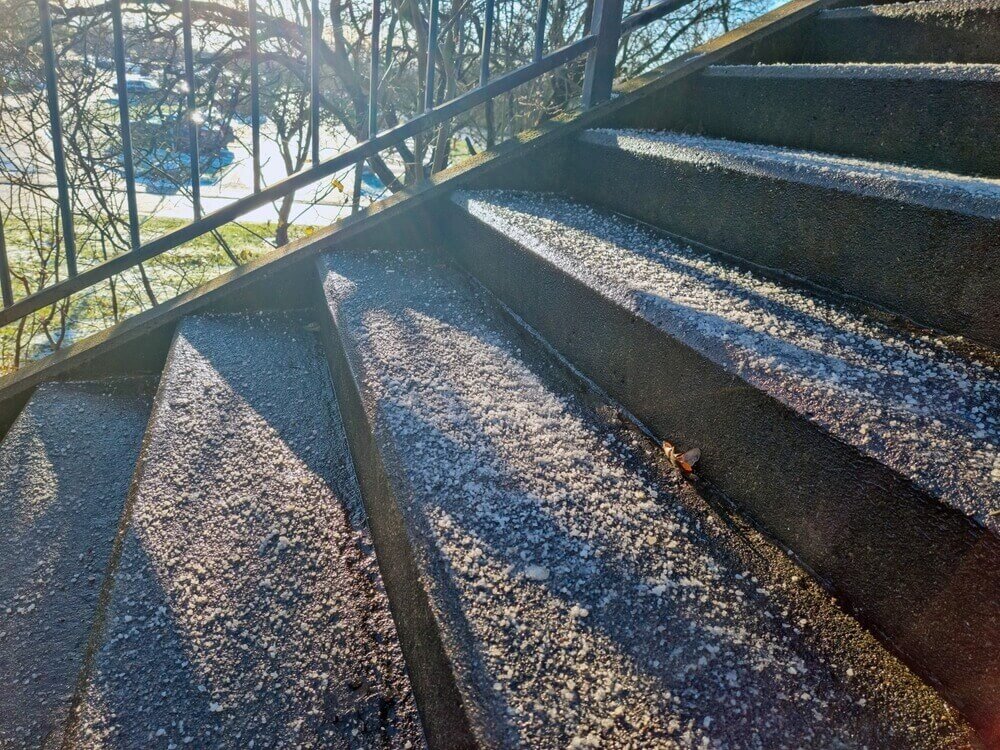
The first winter is a vital period for new concrete to gain the strength it needs to endure many seasons ahead. If you’re contemplating whether to put salt on your new concrete, the best advice is to avoid doing so in the first year. Instead, opt for less harmful alternatives like grit or carefully-selected deicing chemicals to protect both your safety and the longevity of your new concrete surface. Contact Richfield Concrete today to learn if it’s safe to put salt on your new concrete.




